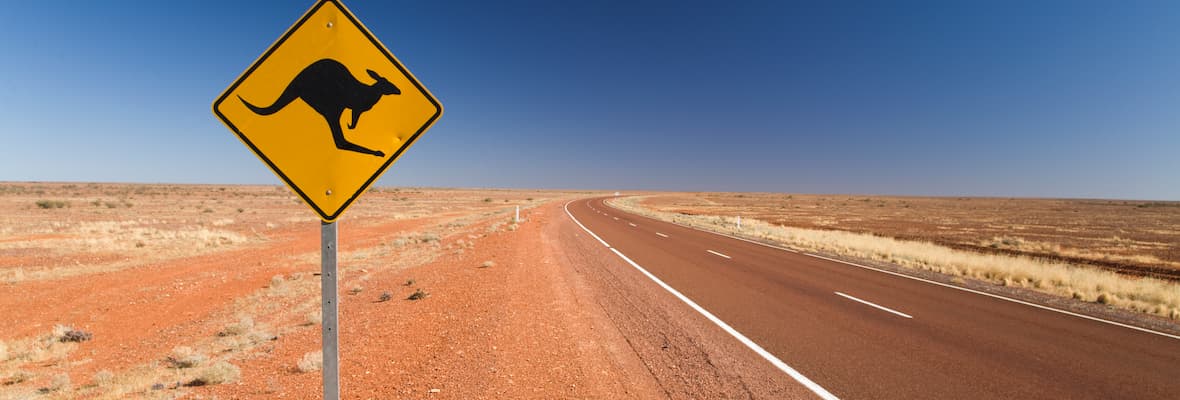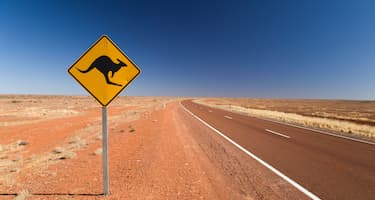Related articles
- 9 road safety tips for your teen learner driver
- Distracted driving facts
- 5 simple ways to make your car safer
- How to safely share the road with non-motorists
- 9 tips for staying safe in service stations
- Child car seat laws and regulations
- How to reduce the risks to children of reversing cars
- Licensing of older drivers in Australia
- The must have car safety features in modern cars
- What cars have ISOFIX in Australia?
- ANCAP safety ratings explained
- How to reverse park
- How to Avoid or Minimise Hail Damage to Your Car
- School road safety tips for families
- Staying safe in your car
- Using mirrors correctly to eliminate blind spots
- How to choose, install & adjust your children’s car seats
- Driving safety tips
- Give way rules - Who goes first?
- Sharing the road safely with heavy vehicles
- What to do after a car accident
- What you should do in the event of a crash with wildlife
- How to drive safely in wet weather
- Why are young drivers considered high risk?
- Which Australian state has the strictest road rules?
- 10 Obscure road rules you didn’t know existed in Australia
- Which states and cities in Australia have the most motor vehicle thefts?
- Learner Driver Restrictions Australia
- Learning How to Drive
- Supervising a Learner Driver: What are the rules?
- Electric Scooter Laws in Australia
Disclaimer: This information is general in nature only. While Budget Direct has endeavoured to ensure the information we’ve relied on is accurate and current, we do not guarantee it. Budget Direct accepts no liability for this information.
Road signs are a major part of road safety in Australia, and are designed to be quick to read and easy to understand.
The majority of road signs can be categorised into three main groups: regulatory, warning and information. Here in Australia, we also have specific animal road signs.
Refresh your knowledge of Australia’s road signs and understand the meaning to keep you safe on the road.
Regulatory signs
These types of road signs control traffic and must be adhered to while driving. They are almost always red and/or black on a white background.
Here is a list of regulatory signs:
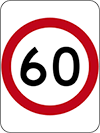
Speed signs – these signs warn drivers of the maximum speed you can drive
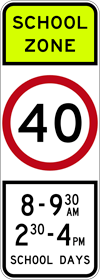
School Zone – you must not go faster than 40km/h between the times stated

Stop – you must stop and give way to all traffic
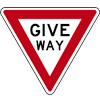
Give way – you must slow down and prepare to stop

Parking signs – you must not park in the designated area
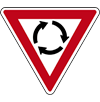
Roundabout – you must be prepared to give way when approaching a roundabout

No left turn – you must not turn left. This sign can also be displayed without words.
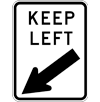
Keep left – you must keep left
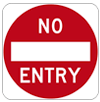
No entry – you must not enter
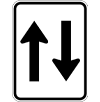
Two way – the road is two lanes
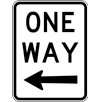
One way – the road is one way to the left

Transit lane (T3) –transit lane limited to vehicles with three or more occupants between specified times and days.
Warning signs
These road signs will alert you to any possible dangers ahead. They are usually yellow with black symbols or letters and (mostly) diamond in shape. There are two types of warning signs: permanent and temporary.
Permanent warning signs
These road signs will make you aware of any upcoming road conditions. This can indicate the presence of people, animals, or a hidden change in the road. They are usually placed at the start of an area of caution.
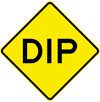
DIP – unexpected or hidden dip in the road
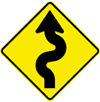
Winding road – sometimes this road sign will have a recommended speed limit written underneath the symbol
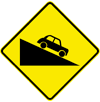
Steep downhill slope ahead – take care when braking
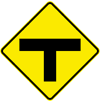
T-intersection – prepare to slow down, stop, and give way
Temporary warning signs
These road signs alert drivers of any temporary road hazards. This may include roadworks, road accidents, fallen trees or floods. They are always placed at the start of an area where extra caution is needed.
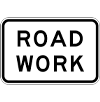
Road works
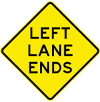
Left lane closed

Temporary warning triangle – alerting an incident ahead (accident or road blockage)
Information signs
These road signs supply you with information that you’ll need for a road trip like distances, state highway numbers and road conditions. These signs are normally a rectangle shape and vary in size and colour.
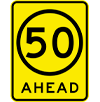
Speed ahead – alerts you of change in speed ahead and encourages you to start slowing down

Guides and route markers – tells you where to exit highways and freeways. Route markers steer drivers onto major routes (popular road trips etc.)

Low clearance – indicates height available under a bridge or other obstacle
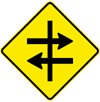
Dual carriageway – road becomes a dual carriageway
Vehicle-mounted signs
These special signs are reserved for large road trains that are supported by pilot vehicles. These heavy vehicles usually carry very large loads on public roads and rely on special signage to signal to driver’s that they should slow down until it’s safe enough to drive at a normal speed.
Australian animal road signs
These road signs will alert you to any animal that you may encounter on Australian roads. Australia has a large amount of animals that can cause an accident while on the road. Similar to warning signs, animal road signs are usually yellow with black letters and symbols.
Here is a list of animal road signs:
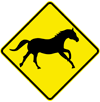
Brumbies
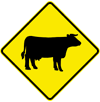
Cattle

Deer
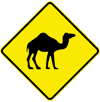
Camels
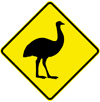
Emus

Kangaroos

Koalas

Stock crossing
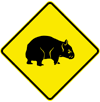
Wombats
Special road signs by state
Road signs and their rules can vary in different Australian states so it’s important to follow the rules according to the state you’re currently in.
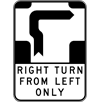
In Victoria you can make a “hook turn” at an intersection when you see a “Right Turn from Left Only” sign. Drivers are also permitted from making a U-turn at traffic lights unless there’s a sign prohibiting it.
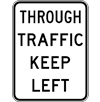
In Queensland you must be in the left lane while driving through an intersection at a “Through Traffic Keep Left” sign.

In Western Australia keep an eye out for any signs indicating “Roundabout Directional Lanes”. These signs identify when you can use multiple lanes at a roundabout and what direction you can turn in according to the lane you’re driving in.
If you’re looking for more information on road signs in each individual state then here some links below:
- New South Wales
- Victoria
- Queensland
- Western Australia
- South Australia
- Tasmania
- Australian Capital Territory
- Northern Territory
Sources
[1] Rhinocarhire.com, 2021, Australia Road Signs
[2] Wikipedia, 2021, Road Signs in Australia
Related articles
- 9 road safety tips for your teen learner driver
- Distracted driving facts
- 5 simple ways to make your car safer
- How to safely share the road with non-motorists
- 9 tips for staying safe in service stations
- Child car seat laws and regulations
- How to reduce the risks to children of reversing cars
- Licensing of older drivers in Australia
- The must have car safety features in modern cars
- What cars have ISOFIX in Australia?
- ANCAP safety ratings explained
- How to reverse park
- How to Avoid or Minimise Hail Damage to Your Car
- School road safety tips for families
- Staying safe in your car
- Using mirrors correctly to eliminate blind spots
- How to choose, install & adjust your children’s car seats
- Driving safety tips
- Give way rules - Who goes first?
- Sharing the road safely with heavy vehicles
- What to do after a car accident
- What you should do in the event of a crash with wildlife
- How to drive safely in wet weather
- Why are young drivers considered high risk?
- Which Australian state has the strictest road rules?
- 10 Obscure road rules you didn’t know existed in Australia
- Which states and cities in Australia have the most motor vehicle thefts?
- Learner Driver Restrictions Australia
- Learning How to Drive
- Supervising a Learner Driver: What are the rules?
- Electric Scooter Laws in Australia
